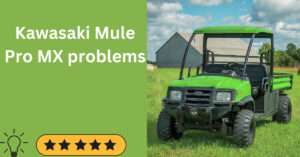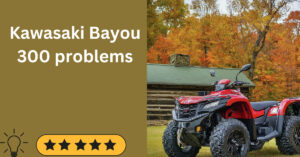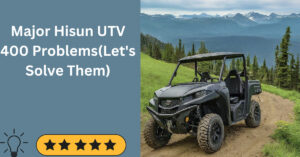Are you a true owner of ATV (All-Terrain Vehicle) and did not know how to drive it? So don’t worry because we will give you the complete details that how to drive an ATV. Let’s explore it!
How to Drive an ATV (All-Terrain Vehicle)
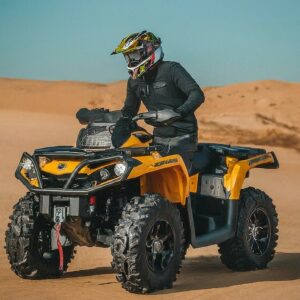
Driving an ATV (All-Terrain Vehicle)can be an exhilarating experience! Whether you’re exploring rugged trails or cruising through open fields, here are some essential steps to get you started:
1. Get to Know the ATV Components:
- Key, On/Off Switch, and Start Button: Locate the ignition key beneath the handles. The on/off switch and start button are typically on the right edge of the handle. If there’s a red button to the left of the start button, it’s the kill switch—ensure it’s not activated.
- Throttle: Check for a thumb-controlled throttle on the right handle or a handlebar throttle, depending on your ATV model.
- Brakes: Metallic handles on both sides of the handlebars control the brakes. Front brakes are usually managed by the handlebars, while the rear brakes use a foot pedal.
- Shift Lever: On the left side, find a small metallic pedal. Push it with your left foot. If your ATV has a clutch, it’ll be the handle attached to the left handlebar.
2. Start Up the ATV:
- Turn the ignition key to the “on” position.
- If your ATV has a kickstart, give it a kick. Otherwise, press the start button.
- Once the engine is running, you’re ready to roll!
3. Drive the ATV:
Clutch and Gear Shifting:
- Pull in the clutch (if your ATV has one).
- Shift from neutral to first gear.
- Gradually release the clutch while pressing the throttle.
- As the ATV moves, shift through the gears to increase speed.
Accelerate and Brake:
- Use the thumb-controlled or handlebar throttle to accelerate.
- Squeeze the right-hand lever to apply the front brakes.
- Use the right foot pedal to engage the rear brakes.
Maintain Proper Posture:
- Grip the handlebars with fingers draped over the clutch and brake levers.
- Keep your weight centered and maintain a comfortable posture.
- Practice shifting, braking, and throttle control while riding.
4. Safety Tips:
- Always wear protective gear, including a helmet, gloves, and sturdy footwear.
- Ride with an experienced friend or family member for guidance.
- Begin slowly, gradually increasing speed and tackling more complex terrains.
- Stay aware of your surroundings and relish the adventure!
How to choose the Right ATV:

Selecting the ideal ATV is a crucial step in ensuring a safe and enjoyable off-road experience. Consider the following factors:
Engine Size:
- Small engines (50cc-125cc): Suitable for beginners and younger riders.
- Medium engines (150cc-400cc): Ideal for intermediate riders.
- Large engines (450cc and above): Geared towards experienced riders and challenging terrains.
Seating Capacity:
- Single-seaters: Designed for solo riders.
- Two-seaters: Accommodate a driver and a passenger.
- Multi-seaters: Suitable for family or group rides.
2WD vs. 4WD:
- 2WD (Two-Wheel Drive): Lighter and easier to manoeuvre, suitable for less challenging terrains.
- 4WD (Four-Wheel Drive): Offers enhanced traction and control, beneficial for rough and uneven surfaces.
Size and Experience Level:
- Choose an ATV that matches your physical size and riding experience.
- A smaller, less powerful ATV may be preferable for beginners, allowing them to learn the basics with ease.
How to Use Proper Safety Gear:
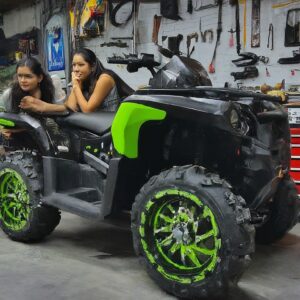
Investing in and wearing the correct safety gear is vital for protecting yourself during ATV rides:
1. Helmet:
- Must be DOT-approved for optimal safety.
- Protects against head injuries in case of accidents.
2. Goggles:
- Shield your eyes from dust, debris, and branches.
- Essential for clear vision during the ride.
3. Gloves:
- Protect hands from blisters and injuries.
- Ensure a secure grip on the handlebars.
4. Boots:
- Over-the-ankle boots provide ankle support.
- Guard against injuries and impacts.
5. Apparel:
- Wear long sleeves and pants to shield against scratches and abrasions.
- Choose durable, breathable materials for comfort.
What Things are Inspecting in ATV Before Riding:
Performing a thorough pre-ride inspection is a preventive measure to identify any potential issues:
1. Tires:
- Check tire pressure for optimal performance.
- Inspect the tread for wear and tear.
Also read Best ATV Tires in 2024
2. Controls:
Ensure all controls, including brakes and throttle, operate smoothly.
3. Fluid Levels:
- Check oil and fuel levels.
- Look for any leaks in the engine or other components.
How to sit Properly on the ATV:
Mastering the correct riding posture is essential for stability and control:
1. Foot Placement:
- Keep your feet firmly on the footrests.
- Avoid dragging feet on the ground.
2. Grip and Posture:
Maintain a secure grip on the handlebars.
Keep your back straight with slightly bent elbows.
3. Weight Distribution:
- Position your body forward to distribute weight evenly on the seat.
- Enhances stability during acceleration and deceleration.
Riding at Safe Speeds:
Adopting responsible speed management contributes significantly to a safe and enjoyable ride:
1. Gradual Speed Increase:
Start with slow speeds and progressively increase as your skills develop.
2. Adhering to Limits:
Obey posted speed limits on trails and terrains.
3. Terrain Awareness:
Adjust your speed based on the type of terrain to avoid accidents.
What are some common problems with ATVs?
Certainly! ATVs (All-Terrain Vehicles) are rugged machines, but like any mechanical equipment, they can encounter issues. Here are some common problems that ATV owners might face:
1. Dead Battery:
- If your ATV doesn’t turn over when you engage the ignition or only sluggishly attempts to do so, the battery might be low on charge.
- Test the battery using a multimeter. An output of 12V indicates a healthy battery. If it’s lower, recharge it with a charger, or consider replacing it.
2. Ignition Issues:
- For the engine to start, there must be both fuel and spark.
- Check the spark plugs for corrosion or damage. Ensure a small gap exists in the spark gap.
- Use a multimeter to test for spark presence.
- Other ignition components like the ignition coil and capacitor discharge ignition (CDI) can also fail, but are less common.
3. Engine System Failures:
-
- Engine-related problems can be complex due to the many mechanical parts involved.
- Symptoms include starting and stalling issues or complete engine failure.
- Possible causes:
- Clogged air filters or exhaust.
- Blocked fuel lines.
- Over-fueling leading to carburetor flooding.
- Some ATV owners may feel comfortable diagnosing engine issues themselves, while others may prefer professional help.
Conclusion:
I think now you understand that how to drive an ATV because here we provide the complete details about it.

